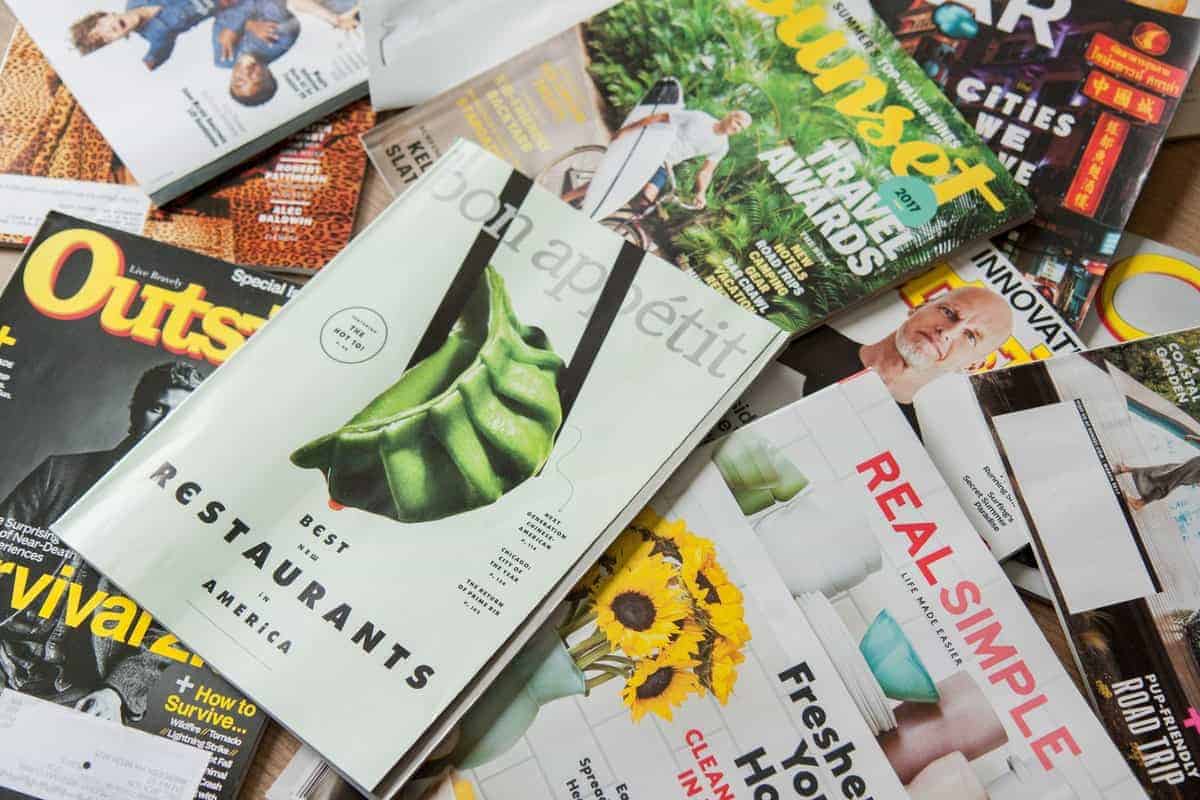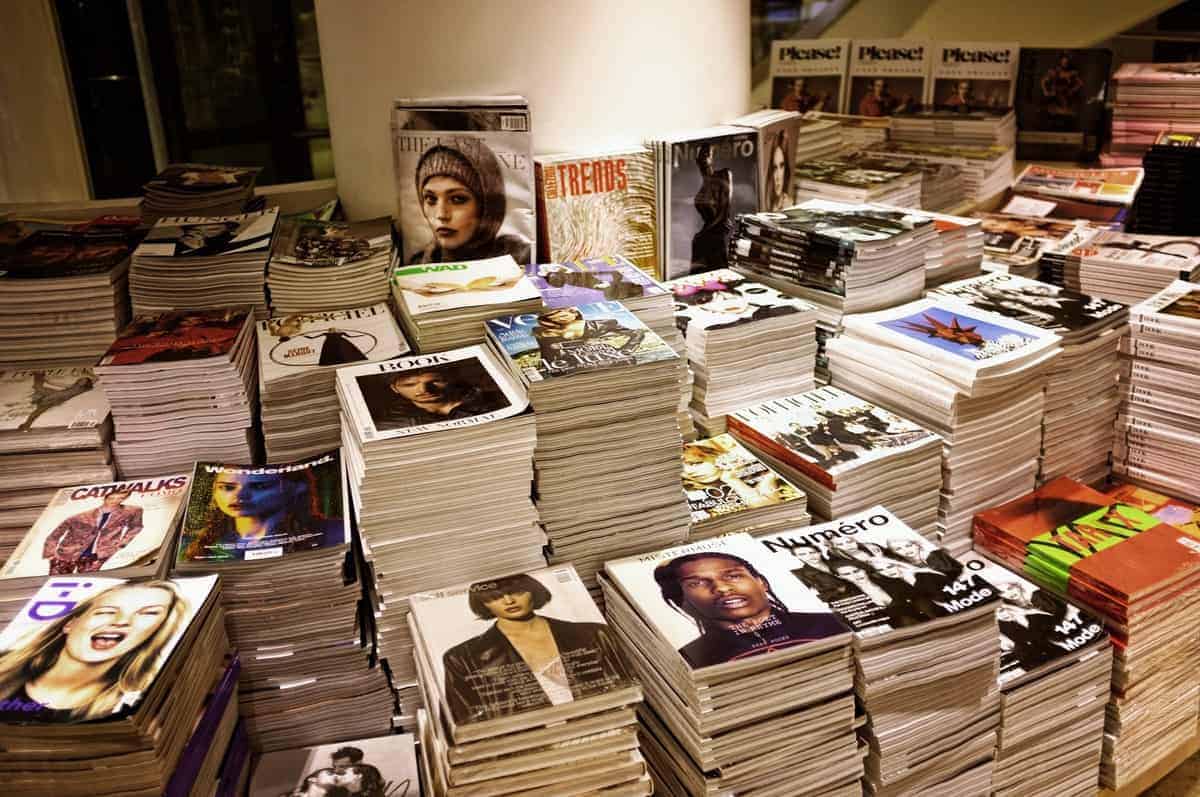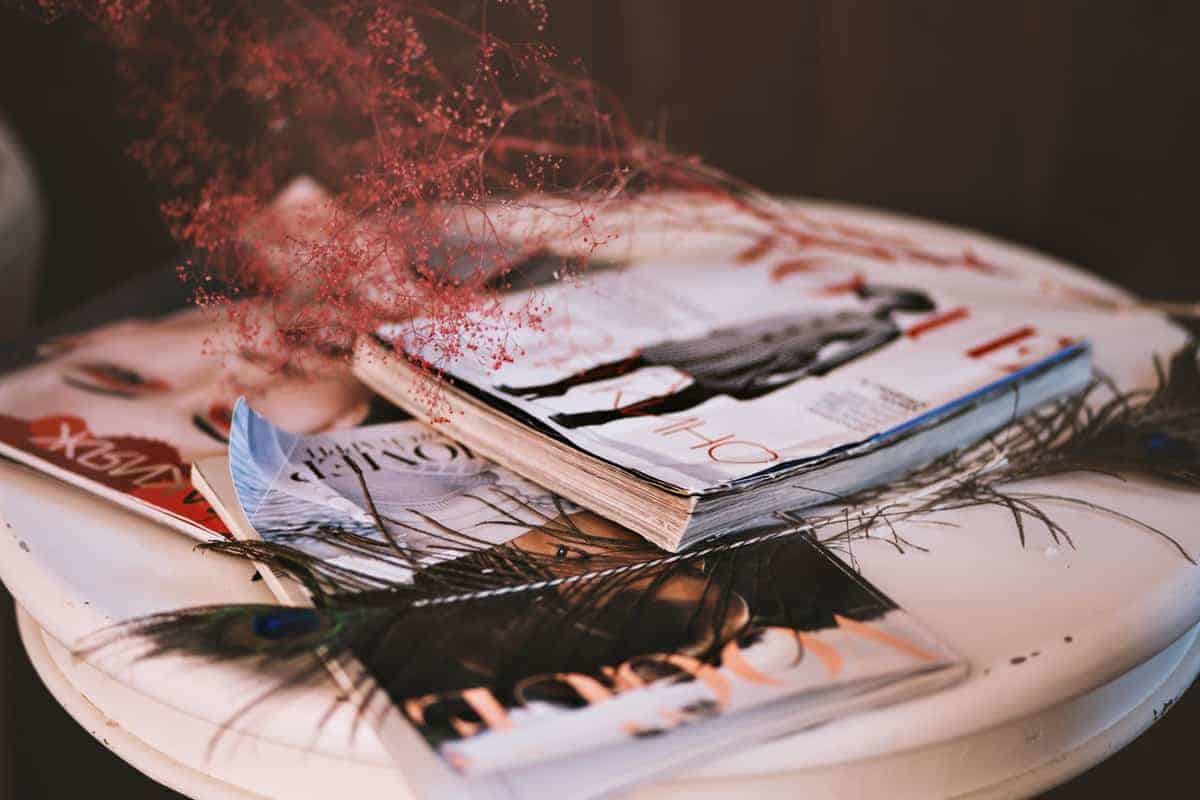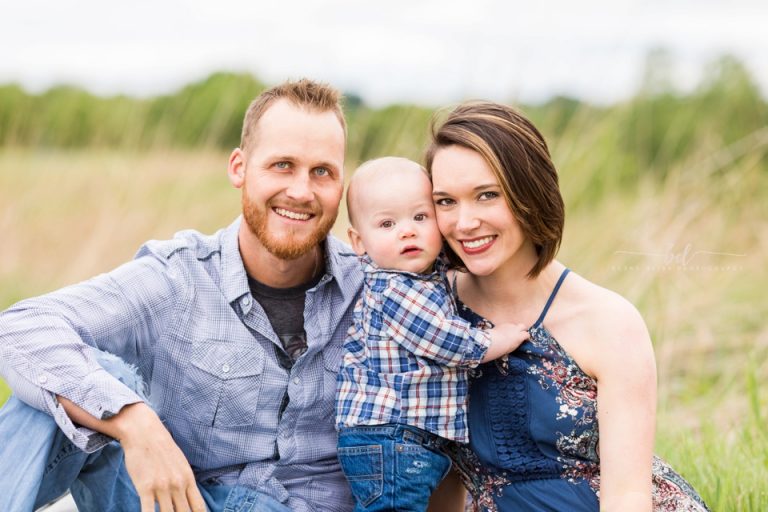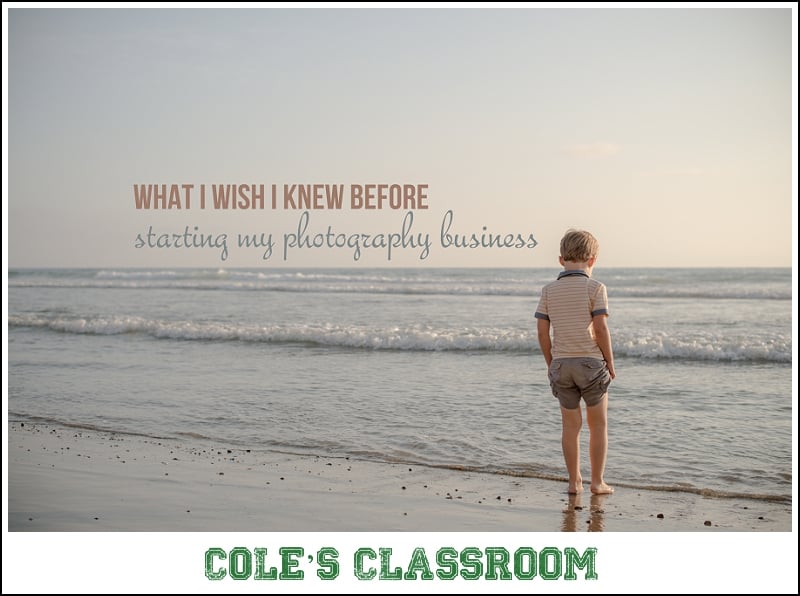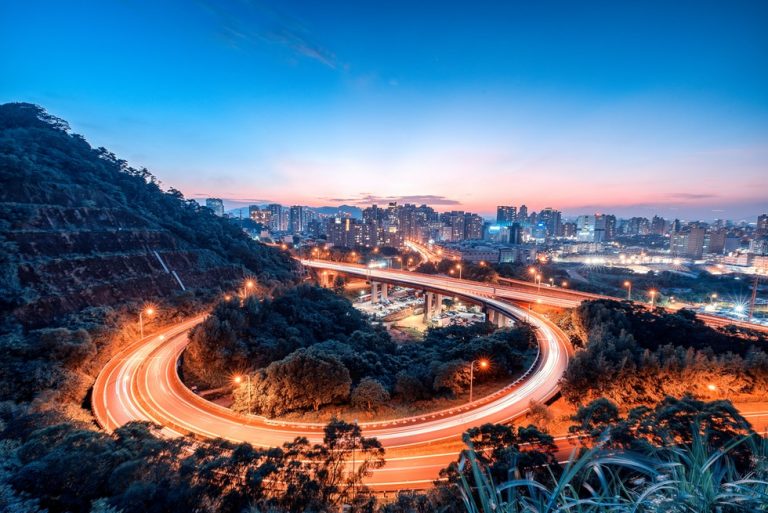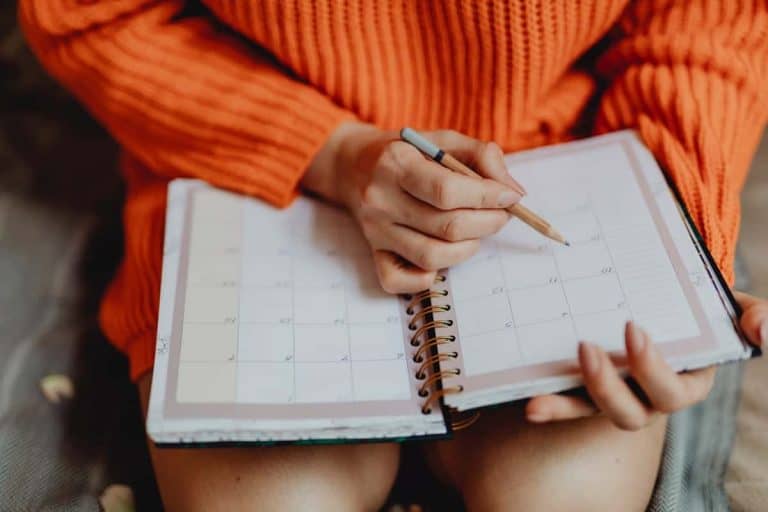Get the inside scoop from a former magazine head on getting photos published in publications and on blogs
Ask 10 emerging photographers about one of their biggest photography dreams. At least a few of them will say getting photos published in a magazine is one of their goals. For landscape or wildlife photographers, it might be National Geographic. For street or documentary photogs, it’s probably a publication like Time or Life. Sports shooters may dream of scoring their images in Sports Illustrated or ESPN the Magazine.
But how do you go about getting photos published in magazines or on blogs? Is it luck? Dogged determination? Knowing someone? Supremely awesome work?
Sometimes, it’s a little bit of all of that and more.
As the manager of the Wyoming Game and Fish Department’s publications, I oversaw the production of “Wyoming Wildlife,” a nationally recognized magazine on wildlife conservation in our state. I got an inside look at how we found, hired and paid freelance photographers. Below follows my best advice for getting photos published. Otherwise known as a list of things my editors loved and hated about freelance submissions.
Read along and build a strategy for accomplishing YOUR secret photography goal.
 Is getting my photos published important?
Is getting my photos published important?
Before Instagram or Facebook or even the World Wide Web, we had magazines, books and newspapers. Photographers’ work was largely seen and noticed by more people than their moms only through newspapers or magazines.
Getting photos published in magazines or newspapers was critical then to establishing your reputation as a photographer. It was also helpful to drive prints sales of your work. Today, making your work visible is almost ridiculously easy. A few keystrokes and you’re online where anyone can find you.
There is still the challenge of creating demand for your work. But finding a platform for visibility isn’t the problem it was even 12 years ago. Now you can choose from Facebook, Instagram, a self-hosted website or Flickr, just to name a few options.
Are published images critical to your success as a photographer?
Not always. But sometimes. It depends on your goals, genre, and area of focus.
There are plenty of successful, well-paid UNPUBLISHED photographers. If your business is primarily locally based or you earn your income from individual client based sessions (think family photographer, newborn photographer, senior photographer), getting published isn’t all that important.
Do your family clients care if you were featured on a national photography blog or published in a photography magazine? Probably not. They will think it’s cool, but chances are they will book with you regardless of your tear sheets.
But…
If you’re a freelance photographer who wants a national audience or wants to break into large-scale commercial, travel, nature or wildlife work, getting photos published does offer some benefits. Getting published…
- Helps promote your work to new and larger audiences and grow your followers.
- Lends credibility to your skill as a photographer.
- Gets your foot into the door to becoming an assignment-based photojournalist vs. freelancer footing all the costs up front.
- Provides an additional income source with paid work.
- Gives you confidence and momentum. And your mom will be thrilled.
How do photographers get published in magazines and blogs?
Getting published in magazines or blogs happens like this. You as the photographer can…
- Submit unsolicited images.
- Answer a call for image submission from the blog or magazine.
- The magazine or blog notices your work online and contacts you.
- Another photographer recommends your work to the magazine.
- You submit images to a photo contest the publication or blog then uses on their site.
Here’s how it worked in our monthly magazine, as well as a great many other publications. Each magazine usually has a handful of staff photographers and a few trusted, go-to freelance photographers. Those freelancers regularly submit work the editor or art director pulls from as needed. If the editor has a piece he doesn’t have anything in the file for and the staff photographers can’t cover it, they’ll submit a request for images out to those same freelancers.
Then if the freelancers still can’t provide the imagery, the editor or art director might go in search of some independent photographers. But I’d estimate that 95 percent of our imagery came from staff photographers or freelancers.
All that is to say, a magazine or blog editor generally won’t come to you. You’ll need to work to foster that relationship.
What’s THE NUMBER ONE step that improves your chances of getting photos published?
Research.
Research your target publication and find their submission guidelines and requirements. Then follow those guidelines to the letter when submitting your images. I don’t care how great your images are. If you don’t do the footwork of finding where and exactly how to get your work seen, you aren’t getting published.
Here’s what you’ll want to find out:
Does the magazine or blog accept submissions?
Many magazines and blogs don’t accept unsolicited photographs for publications. National Geographic, for example, won’t accept your submissions (other than through the “Your Shot” program). Don’t waste the time, effort and cost of pulling your imagery together if the policy is no photographs.
Also understand how the blog wants you to pitch your work. Does the blog accept general sample images? Or do they require you pitch a feature shoot idea?
When does the magazine accept submissions?
Some publications limit submissions to a certain time of year. Know your window of opportunity!
How many images can you submit at once?
Different publications have different limits on how many images you can send at once. I recommend sending the maximum allowed to show the range and breadth of your work. Unless the image is truly once in a lifetime, most magazines prefer to work with a freelancer that has a significant volume of high-quality shots and build a long-term relationship.
What types of images (subject or genre) do they accept?
Some blogs and publications accept images only for themed issues. Some have other rules. Our magazine, Wyoming Wildlife, featured images of wildlife and landscapes of our state. I don’t care how amazing your shot of the Grand Canyon or a manatee is. If the image wasn’t Wyoming or related to wildlife in Wyoming, it got tossed.
What format does the publication accept?
Know how to send your images…PDFs, JPEGs, TIFFs, contact sheets or 8×0 prints. Don’t send a link to your portfolio if they request 10 low res JPEGs. The editor won’t view it.
Do submissions need to be exclusive?
Some magazine demand exclusivity. The editor won’t use an image already published by the competitor. Likewise, an art director generally won’t pay for an image they could buy as stock photography for pennies on the dollar.
See Submissions guideline examples
- Outdoor Photographer submission guidelines
- Outpost magazine submission guidelines
- Monrowe magazine submission guidelines
How do I find out how to submit my images to a publication or blog?
Most magazines and blog publish their submission guidelines on their websites. If you can’t find them online, call or e-mail the publication directly.
Then follow the guidelines exactly! Nothing irritates an editor or art director more than a prospective employee that can’t follow directions. Think of the image submission like a job interview. Follow the guidelines exactly. Otherwise, you risk getting thrown out on a technicality.
Other Tips for Getting Photos Published
#1. Make sure you’re a good fit for the publication.
Does your style match your target magazine or blog? What about your overall brand compatibility? Do you support the magazine’s overall goals and mission, or will your personal politics be a sticking point?
I can’t stress how important it is for you to understand the publication’s subject matter, mission, and visual imagery before you go to the work of compiling submissions. Get inspired by or curious about the subject matter! If you’re just looking for any crumbs of publishing or payment, a good editor or art director will sense that and pass you by.
For example, a bridal magazine’s style might be bright and airy where you shoot dark and moody exclusively. Or are you an outspoken anti-hunting activist trying to get your images published in a magazine largely paid for by hunters and anglers? That quite literally happened at our magazine. Occasionally, a writer or photographer who publicly decried our agency elsewhere came to us wanting paid for work. Needless to say, it didn’t happen. Opposites rarely attract in the publishing world.
Click here for ideas on pitching your work to magazines!
#2. Only submit your very best work.
Be brutally honest with yourself. Is your work really good enough?
Evaluate your images with a supercritical eye and be honest. If your image has an obvious flaw (soft focus, motion blur, excessive grain, lots of distracting background elements) it’s not going to make the art director or editor’s cut.
We saw a lot of mediocre and sometimes just plain awful images get submitted to our photo contest and as possible freelance work. I don’t say that in cruelty. I say it to save you time and heartache. Working as a professional photographer means being able to assess your work critically and objectively. If your work can’t consistently compete with the existing imagery in a magazine, don’t submit it. Keep honing your craft and reevaluate in a few months.
To show you what I mean, let’s look at my wildlife and nature work. I love shooting wildlife and nature. Some of my images have won local awards and garnered attention. But in reality, I’ve only got a handful of shots that might be good enough for my former magazine. Might be. I’m proud of my skill and love to photograph wildlife. But as a whole, my outdoor work doesn’t really stack up well against some of the best wildlife photographers in the country.
So send only your very best work. And make sure it’s really good enough.
Want more advice and ideas on getting started as a freelancer? Check out our tutorial!
#3. Shoot what the publication needs.
Sometimes a publication will put out a call for certain types of images they need. Jump on that! It’s a chance to get your foot in the door and garner the attention of the editor.
If you don’t know what they need, ask. As an example, Wyoming Wildlife had an incredibly strong photo catalog of big and small game images like deer, elk, moose, and grouse. What we were needed more of was images of people in the field hunting, fishing or hiking. A freelancer that could provide consistently, quality general outdoor recreation shots was always an asset.
We also worked off an editorial calendar planned a year or more in advance. One call to an editor can net you a list of stories needing photo support in the coming months. An enterprising freelance photographer looking to make a name for herself could shoot and submit those photos increasing her chances of getting published and becoming a go-to photographer.
#4. Form partnerships with freelance writers. Or write your own pieces.
Work with a talented writer. Package your work together. Or write your own articles. A great story with beautiful imagery is more attractive than a handful of unrelated photos. Editorial staff are constantly busy. Make it easy for them to select your stuff.
#5. Don’t get tunnel vision.
It’s fine to set your sights on Vogue or Outdoor Photography. But don’t overlook smaller local or regional publications. Or lesser known publications. Despite a seeming lack of prestige, smaller blogs or magazines can be hugely beneficial to your career. And don’t discount your local or regional general coverage or trade newspapers.
Think less competition and a chance to form personal, stronger relationships. An intimate blog or publication might be the exact niche you’re looking for or a great first step on a journey to national recognition.
#6. Leverage hasthags and keywords on your platforms.
It doesn’t happen very often, but sometimes an editor will come looking for you. She’ll probably need a specific image – a specific flower, a certain animal, an individual product or designer. Editors use Google or Instagram to search for what they need just like the rest of us. Tag your images correctly and your work might be one that rises to the top. Don’t overlook the things you can control!
#7. Add a short note introducing yourself with your work.
Personalize your submission with a short note about yourself and why you want to work for the brand. It shows you are paying attention to the work of the publication and that you get what they are trying to communicate and accomplish. Keep it short, but be friendly and thoughtful.
#8. Join related groups and attend conferences to network.
Many photography industries have their own trade organizations you can join. Not only do these organizations hold host workshops and organizations for members that represent networking opportunities, they also have exclusive job boards or lists you can access. Meet editors, art directors and fellow freelancers in your industry at events. Talk face-to-face with potential “buyers” and build your credibility just by being in the room.
Editors and art directors use the photographers they know and like. The more decision makers you get to know the better your chances. And the people you meet today may become the decision makers tomorrow.
#9. Ask other freelancers
It never hurts to solicit advice from the guys and gals in the trenches who have built a career as freelance photographers. Follow their blogs, participate in their webinars or training and ask questions.
Do I get paid for getting photos published?
It depends on the publication. Many magazines, newspapers and blogs will pay you at least a little something to use your photos. But there are a handful that won’t. You’ll need to check with each publication for their policies.
What if you’re approached by a blog or publication that wants to use your photos for a “photo credit” in lieu of payment? Only you can decide if the”exposure” is really worth it.
My personal policy is to donate images for educational or governmental publications or blogs. But if the “influencer” or business is making money, I require payment or some other kind of compensation such as free advertising or comped products. As the saying goes, exposure doesn’t pay my bills. Whether or not the possible exposure and recognition is worth it is something you’ll need to answer for yourself.
Trying to break into fashion photography? We have you covered!
What about photo contests?
Photo contests are another option for getting photos published. Our magazine ran an annual photo contest. The issue with the winners was easily our most popular each year. Occasionally it led to us discovering new freelancers.
Just be sure to read the fine print of the contest.
Does the photo become the property of the publication upon submission? Is there any limit to how they can use it? Are you signing away all copyrights by entering?
The best contests pay the winners money. Reputable publications let you keep your copyrights. They also respect your work, asking only for one-time use and pay you for any other uses. Less reputable companies and magazines use it as a way to get a lot of imagery for zero dollars. They are banking on your vanity outweighing your good sense.
A cover shot is awesome. Undoubtedly. But it’s not generally worth giving away the rights to your very best work for perpetuity.
 How do I find possible magazines or blogs interested in my work?
How do I find possible magazines or blogs interested in my work?
Brainstorm a list of possible publications in your area or field of expertise and research their aesthetic, mission and submission guidelines. If you feel like it’s a good match, start pulling your submissions together.
Or search the web for blogs and magazines that accept freelance submissions in your genre. No sense in you duplicating a list that already exists!
If you can’t find submission guidelines or don’t know who to contact, do a little more research. Ask other writers or photographers for possible contact info. Or find the publication’s masthead or “contact us” page and look for a likely contender.
Or purchase mailing lists, either snail mail or e-mail,for art directors or editors.
And finally, don’t be afraid to pick up the phone and make a call. Editors get dozens of e-mails a day that may or may not get returned quickly. Sometimes a phone call can help. Don’t pitch over the phone, however. Simply get the correct contact information. It might just set you apart and get you the information you need quickly.
Should I pay to publish?
Equally important is the question of should you pay to for your photos to appear in a magazine or blog? Once in a while, a magazine or blog will call begging for your work. They love your work and want to include you in their upcoming issue. But there’s one tiny detail…you’ll have to pay a small fee to them first or agree to buy copies of the publication.
These are vanity publication. They make money not through advertisers or direct sales but from the featured artists, either from direct fees or sales of the publication to the artists.
Some struggling artists pay for a “feature spotlight” in their publication of choice. It looks like a feature photo spread instead of disguised paid advertisement. But it is an ad!
Yes, your work will appear in a publication. But you won’t get paid. And these kinds of publications don’t have a huge distribution because they are mostly just selling to the featured artists. And finally, do your long-term clients even care about published images? So again, it’s a decision you need to make…is the possible exposure worth the time and effort for no payment? My gut feeling is probably not. Put your money toward education, upgraded equipment or more legitimate marketing/advertising efforts.
Resilience and repetition is key
My final advice is getting photos published isn’t an overnight event. You need a strong versatile portfolio, awesome sample images, and a process to align your best work with prospective publications.
And remember published images aren’t the above all, end all of your work as a photographer. It’s really cool seeing your shot in a 4-color glossy spread. I’m not gonna lie. But don’t put your need for validation above good sense and don’t let a single rejection derail your love of photography. Keep shooting, keep improving, keep grinding and maybe your images will be the next ones we see on newstands.
